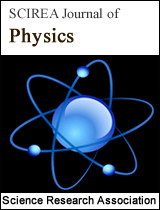Expressions for the 21 cm wavelength of H and their use to derive two energy-frequency equations to exactly calculate the Planck constant
DOI: 10.54647/physics140637 46 Downloads 11128 Views
Author(s)
Abstract
This work presents a straightforward trigonometric derivation of two fine-structure constant-based analytical expressions to calculate the hydrogen 21 cm radio wavelength, H21. This expression is transformed into two equations with an energy-frequency interpretation for the Planck constant whose exact numerical value can be obtained.
Keywords
Intergalactic H 21 cm radio wave, Rydberg wavelength unit, Planck constant, Sommerfeld or fine-structure constant
Cite this paper
Emmanuel Saucedo-Flores, Víctor Manuel Rangel-Cobián, Rubén Ruelas Lepe,
Expressions for the 21 cm wavelength of H and their use to derive two energy-frequency equations to exactly calculate the Planck constant
, SCIREA Journal of Physics.
Volume 9, Issue 4, August 2024 | PP. 141-144.
10.54647/physics140637
References
| [ 1 ] | H.C. van de Hulst, "Radio waves from space", Nederlandsch Tijdschrift voor Natuurkunde 11, 210 (Dec. 1945). |
| [ 2 ] | H.I. Ewen and E.M. Purcell, "Radiation from galactic hydrogen at 1420 Mc/s", Nature 168,356 - 357 (1951). https://www.nrao.edu/archives/static/Ewen/ewen_bibliography.shtml |
| [ 3 ] | Emmanuel Saucedo-Flores, “Trigonometric derivations of the fine structure constant, the proton charge radius, the proton to electron mass ratio, the electron charge to mass ratio and the classical expressions for the Compton wavelengths”, SCIREA Journal of Physics, ISSN: 2706-8862, Vol. 5, Issue 6, Dec. 2020. https://www.scirea.org/journal/PaperInformation?PaperID=4455 |
| [ 4 ] | Lulu Liu, Chris Chronopoulos “The Hydrogen 21-cm Line and Its Applications to Radio Astrophysics” MIT report, March 09 2008. https://web.mit.edu/lululiu/Public/8.14/21cm/21cm.pdf |
| [ 5 ] | Eite Tiesinga, Peter J. Mohr, David B. Newell, and Barry N. Taylor (2024), "The 2022 CODATA Recommended Values of the Fundamental Physical Constants" (Web Version 9.0). https://www.nist.gov/pml/fundamental-physical-constants |

